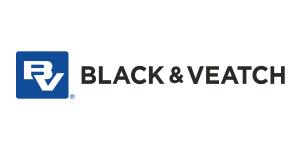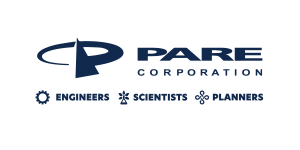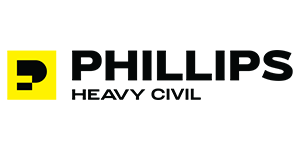Spillway Conduit System Problems
Contents
- Undermining
- Pipe Deformation
- Joint Deterioration
- Conduit Deterioration
- Differential Settlement
- Misalignment
- Monitoring and Repair
- Dam Owner Academy Series
- Save this page as a printable Dam Owner's Fact Sheet [PDF]
Many dams have conduit systems that serve as principal spillways. These conduit systems are required to carry normal stream and small flood flows safely past the embankment throughout the life of the structure. Conduits through embankments are difficult to construct properly and can be extremely dangerous to the embankment if problems develop after construction. Conduits are usually difficult to repair because of their location within the embankment. Also, replacing conduits requires extensive excavation. In order to avoid difficult and costly repairs, particular attention should be directed to maintaining these structures. The most common problem noted with spillway conduit systems is undermining of the conduit. This condition typically results from water leaking through pipe joints, seepage along the conduit or inadequate energy dissipation at the conduit outlet. The typical causes of seepage and water leaking through pipe joints include any one or a combination of the following factors: loss of joint material, separated joints, misalignment, differential settlement, conduit deterioration, and pipe deformation. Problems in any of these areas may lead to failure of the spillway system and possibly dam failure.
Undermining
Undermining is the removal of foundation material surrounding a conduit system. Any low areas or unexplained settlement of the earthfill in line with the conduit may indicate that undermining has occurred within the embankment. As erosion continues, undermining of a conduit can lead to displacement and collapse of the pipe sections and cause sloughing, sliding or other forms of instability in the embankment. As the embankment is weakened, a complete failure of the conduit system and, eventually the dam may occur.
Seepage along the conduit from the reservoir can occur because of poor compaction around the conduit. If seepage control devices have not been installed, the seepage may remove foundation material from around the conduit and eventually lead to undermining.
In addition, undermining can occur as the result of erosion due to inadequate energy dissipation or inadequate erosion protection at the outlet. This undermining can be visually observed at the outlet of a pipe system and can extend well into the embankment. In this case, undermining can lead to other conduit problems such as misalignment, separated joints and pipe deterioration. An extensive discussion on outlet erosion control as it relates to undermining of the pipe outlet can be found in the “Outlet Erosion Control Structures” fact sheet.
Installation of seepage control devices is required as a preventative measure to control seepage along the conduit and undermining. Regular monitoring of conduit systems must include visual observation and notation of any undermining or any precursors. These precursors usually include pipe deformation, misalignment and differential settlement, pipe deterioration, separated joints and loss of joint material.
Pipe Deformation
Pipe deformations are typically caused by external loads that are applied on a pipe such as the weight of the embankment or heavy equipment. Collapse of the pipe can cause failure of the joints and allow erosion of the supporting fill. This may lead to undermining and settlement. Pipe deformation may reduce or eliminate spillway capacity. Pipe deformation must be monitored on a regular basis to ensure that no further deformation is occurring, that pipe joints are intact and that no undermining or settlement is occurring.
Joint Deterioration
Conduit systems usually have construction and/or section joints. In almost every situation, the joints will have a water stop, mechanical seal and/or chemical seal to prevent leakage of water through the joint. Separation and deterioration can destroy the watertight integrity of the joint. Joint deterioration can result from weathering, excessive seepage, erosion or corrosion. Separation at a joint may be the result of a more serious condition such as foundation settlement, undermining, structural damage or structural instability. Deterioration at joints includes loss of gasket material, loss of joint sealant and spalling around the edges of joints. Separation of joints and loss of joint material allow seepage through the pipe. This can erode the fill underneath and along the conduit causing undermining, which can lead to the displacement of the pipe sections. Separated pipe joints can be detected by inspecting the interior of the conduit. A regular monitoring program is needed to determine the rate and severity of joint deterioration. Joint separations should be monitored to determine if movement is continuing.
Conduit Deterioration
Deterioration of conduit material is normally due to the forces of nature such as wetting and drying, freezing and thawing, oxidation, decay, ultra-violet light, cavitation and the erosive forces of water. Deterioration of pipe materials and joints can lead to seepage through and along the conduit and eventually failure of conduit systems. Additional information on deterioration can be found on the “Problems with Concrete Materials”, “Problems with Metal Materials”, and “Problems with Plastic (Polymer) Materials” fact sheets.
Differential Settlement
Removal or consolidation of foundation material from around the conduit can cause differential settlement. Inadequate compaction immediately next to the conduit system during construction would compound the problem. Differential settlement can ultimately lead to undermining of the conduit system. Differential settlement should be monitored with routine inspections and documentation of observations.
Misalignment
Alignment deviations can be an indication of movement, which may or may not be in excess of design tolerances. Proper alignment is important to the structural integrity of conduit systems. Misalignment can be the direct result of internal seepage flows that have removed soil particles or dissolved soluble rock. Misalignment can also result from poor construction practices, collapse of deteriorated conduits, decay of organic material in the dam, seismic events or normal settlement due to consolidation of embankment or foundation materials. Excessive misalignment may result in other problems such as cracks, depressions, slides on the embankment, joint separation and seepage. Both the vertical and horizontal alignment of the conduit should be monitored on a regular basis.
Monitoring and Repair
Frequent inspection is necessary to ensure that the pipe system is functioning properly. All conduits should be inspected thoroughly once a year. Conduits that are 24 inches or more in diameter can be entered and visually inspected with proper ventilation and confined space precautions. Small inaccessible conduits may be monitored with video cameras. The conduits should be inspected for misalignment, separated joints, loss of joint material, deformations, leaks, differential settlement and undermining. Problems with conduits occur most often at joints, and special attention should be given to them during the inspection. The joint should be checked for separation caused by misalignment or settlement and loss of joint-filler material. The outlet should be checked for signs of water seeping along the exterior surface of the conduit. Generally, this is noted by water flowing from under the conduit and/or the lack of foundation material directly beneath the conduit. The embankment surface should be monitored for depressions or sinkholes. Depressions or sinkholes on the embankment surface above the spillway conduit system develop when the underlying material is eroded and displaced. Photographs along with written records of the monitoring items performed provide invaluable information.
Effective repair of the internal surface or joint of a conduit is difficult and should not be attempted without careful planning and proper professional supervision. Various construction techniques can be applied for minor joint repair and conduit leakage, but major repairs require a plan be developed by a professional engineer experienced in dam spillway construction.
Dam Owner Academy: Spillways & Outlet Works
The Dam Owner Academy is a series of videos to educate and inform owners on all aspects of operating and maintaining a dam safely. The videos concisely present the critical basics of owner responsibilities and are available as a free resource for owners and those conducting owner outreach programs.
Spillway Conduit System Problems are discussed in the "Spillways & Outlet Works" video.


































